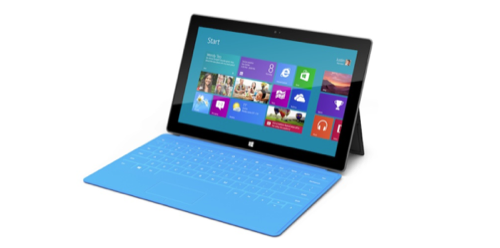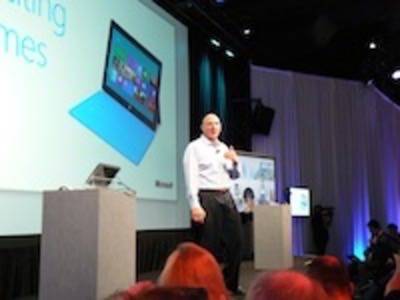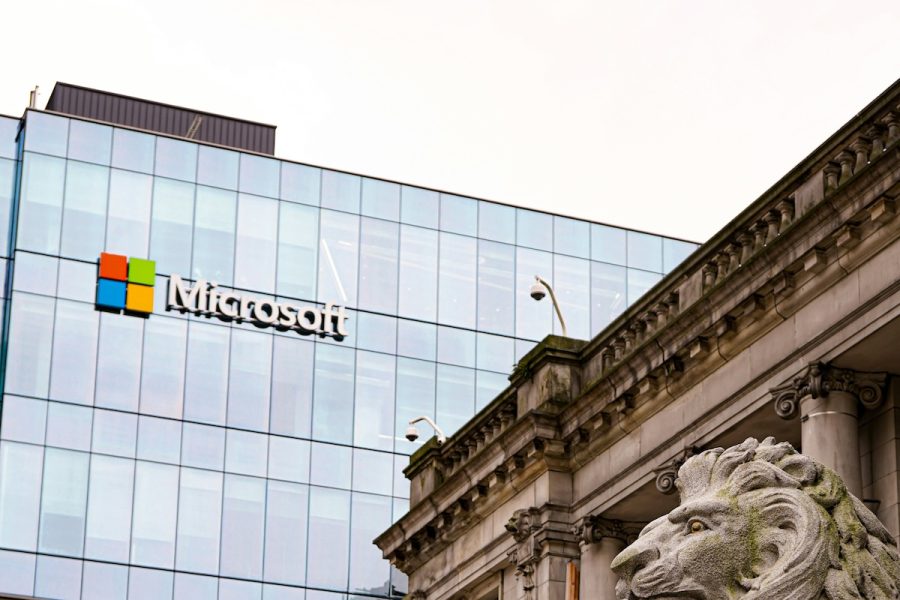
Dell, Lenovo and Samsung have committed to building their own Surface RT tablets, Microsoft announced on Monday, building out an ecosystem for the company’s heavily hyped new Windows 8 platform.
Microsoft also disclosed new details about the capabilities of the new tablets, including that they will be able to sit within a “connected standby” state for more 17 days, an extended period during which the tablet will silently collect new email and other updates, then display them when the user restores the Surface from standby.
The message here – again – is while Acer complained about Microsoft entering the hardware business with the Surface tablet, Microsoft’s other hardware partners have joined in, apparently enthusiastically. Microsoft’s announcement Monday brings the total number of OEMs supporting the Surface RT ecosystem to four, after Asus announced its Tablet 600 at Computex.
Surface RT to Come in Many Flavors
The industry also now has an official label for the “RT” versions of the Surface devices. Microsoft labeled “Surface RT” with a trademark ™ designation within its post, indicating that that will be the official name of the product.
In June, Microsoft announced the two members of the Surface family in June at an event in Los Angeles. The cheaper Surface RT uses a version of Windows 8 optimized for the ARM processors that the tablets will run on; in a Monday blog post, Mike Angiulo, the vice president of Microsoft’s Ecosystem and Planning team, noted that the company had developed a single version of Windows RT that encompasses and supportsthe numerous versions of CPUs developed by component partners Nvidia, Qualcommm, and Texas Instruments.

That’s significant, as there will be likely more variations of Surface RT products, based upon processor and screen size, than there will be for the full-featured Surface (also known as the Surface Pro). The Surface Pro uses either an low-power processor from either AMD or Intel; the recently-announced Lenovo Tablet 2 uses an Intel Atom “Clover Trail” chip.
Unfortunately, we still don’t know exactly what type of Surface RT tablets Dell and the other OEMs will announce. However, Microsoft did say that their Surface RT tablets won’t necessarily be, well, tablets. “Some of our Windows RT PCs come with full keyboard and touchpad solutions, whether removable/dockable or a traditional clamshell,” Angiulo wrote.
Microsoft’s overarching point, however, was that those tablets were coming.
“Dell’s tablet for Windows RT is going to take advantage of the capabilities the new ecosystem offers to help customers do more at work and home,” Sam Burd, vice president of Dell’s PC product group, said in a statement. “We’re excited to be Microsoft’s strategic partner, and look forward to sharing more soon.”
Lenovo and Samsung had not commented at press time.
What Surface RT Can Do
While the OEMs weren’t ready to divulge details of their product offerings, Microsoft itself provided more important information: exactly what the tablets could do.
“…All of these Windows RT PCs will have consistent fast and fluid touch interactions, long battery life, connected standby, and are beautiful, thin, and light designs,” Angiulo wrote. “All of these are designed to make the most of the capabilities of Windows RT.”
Specifically, Microsoft said that the Surface RT tablets it was aware of ranged in weight from 500 grams (1.1 pounds) to 1,200 grams (2.6 pounds). The tablets ranged from between 8.35 mm to 15.6 mm thick, with lengths that spanned 263 mm (10.3 inches) to 298 mm (11.73 in.) and widths ranging from 168.5 mm (6.63 in.) to 204 mm (8.03 in.)
In terms of hardware capability, Microsoft said that the tablets would be able to generate the Windows 8 animations at a fluid 60 Hz, and sample finger input at a smooth 100 Hz per finger. Users wil be able to “bump” or tap two Windows RT devices together and share photos, URLs, map directions and other information. The Surface RT tablets will be able to play HD video continuously for about 8 to 13 hours at screen brightnesses of 200 nits.
Microsoft also said that about 90% of the released-to-manufacturing apps for the Windows Store supported Windows RT, aided by the 1,500 or so Windows RT reference systems it seeded to software and hardware developers.
Perhaps the most impressive capability, though, is the “connected standby time,” now measured in weeks rather than hours or days. Microsoft said that it had seen Windows RT tablets with batteries ranging between 25 Watt-hr to 42 Whr in capacity. Google’s Nexus 7 tablet claims to have a 300-hour standby time, versus the 320-hour to 409-hour times quoted by Microsoft.
Microsoft also detailed some of the Windows RT gestures, which will seem familiar to tablet and phone users. The cursor is moved with a swipe, and double-clicks are enabled either with two quick taps, or a single tap with two fingers. Swiping in from the right edge toggles the charms, and swiping from the left edge enables the previously used app. Pinch to zoom is also enabled, a feature that’s not part of the update to Microsoft’s latest mouse.
Surface product shot courtesty of Microsoft. Steve Ballmer Surface introduction shot by Fredric Paul for ReadWriteWeb.










